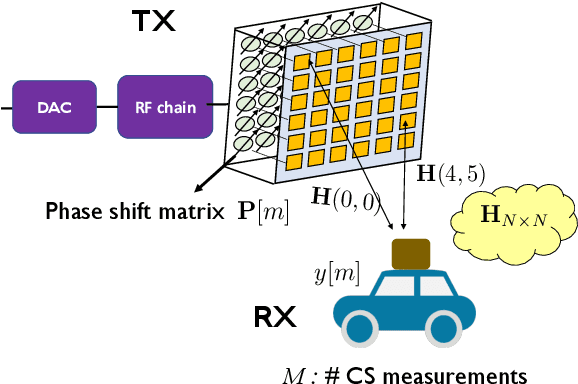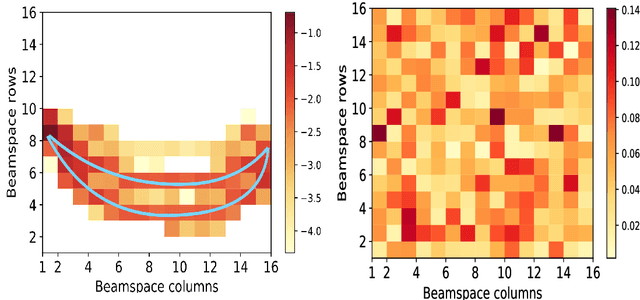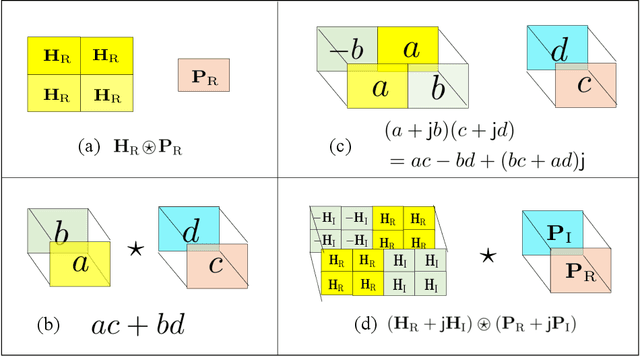Deep Learning-based Compressive Beam Alignment in mmWave Vehicular Systems
Paper and Code
Feb 27, 2021



Millimeter wave vehicular channels exhibit structure that can be exploited for beam alignment with fewer channel measurements compared to exhaustive beam search. With fixed layouts of roadside buildings and regular vehicular moving trajectory, the dominant path directions of channels will likely be among a subset of beam directions instead of distributing randomly over the whole beamspace. In this paper, we propose a deep learning-based technique to design a structured compressed sensing (CS) matrix that is well suited to the underlying channel distribution for mmWave vehicular beam alignment. The proposed approach leverages both sparsity and the particular spatial structure that appears in vehicular channels. We model the compressive channel acquisition by a two-dimensional (2D) convolutional layer followed by dropout. We design fully-connected layers to optimize channel acquisition and beam alignment. We incorporate the low-resolution phase shifter constraint during neural network training by using projected gradient descent for weight updates. Furthermore, we exploit channel spectral structure to optimize the power allocated for different subcarriers. Simulations indicate that our deep learning-based approach achieves better beam alignment than standard CS techniques which use random phase shift-based design. Numerical experiments also show that one single subcarrier is sufficient to provide necessary information for beam alignment.
 Add to Chrome
Add to Chrome Add to Firefox
Add to Firefox Add to Edge
Add to Edge